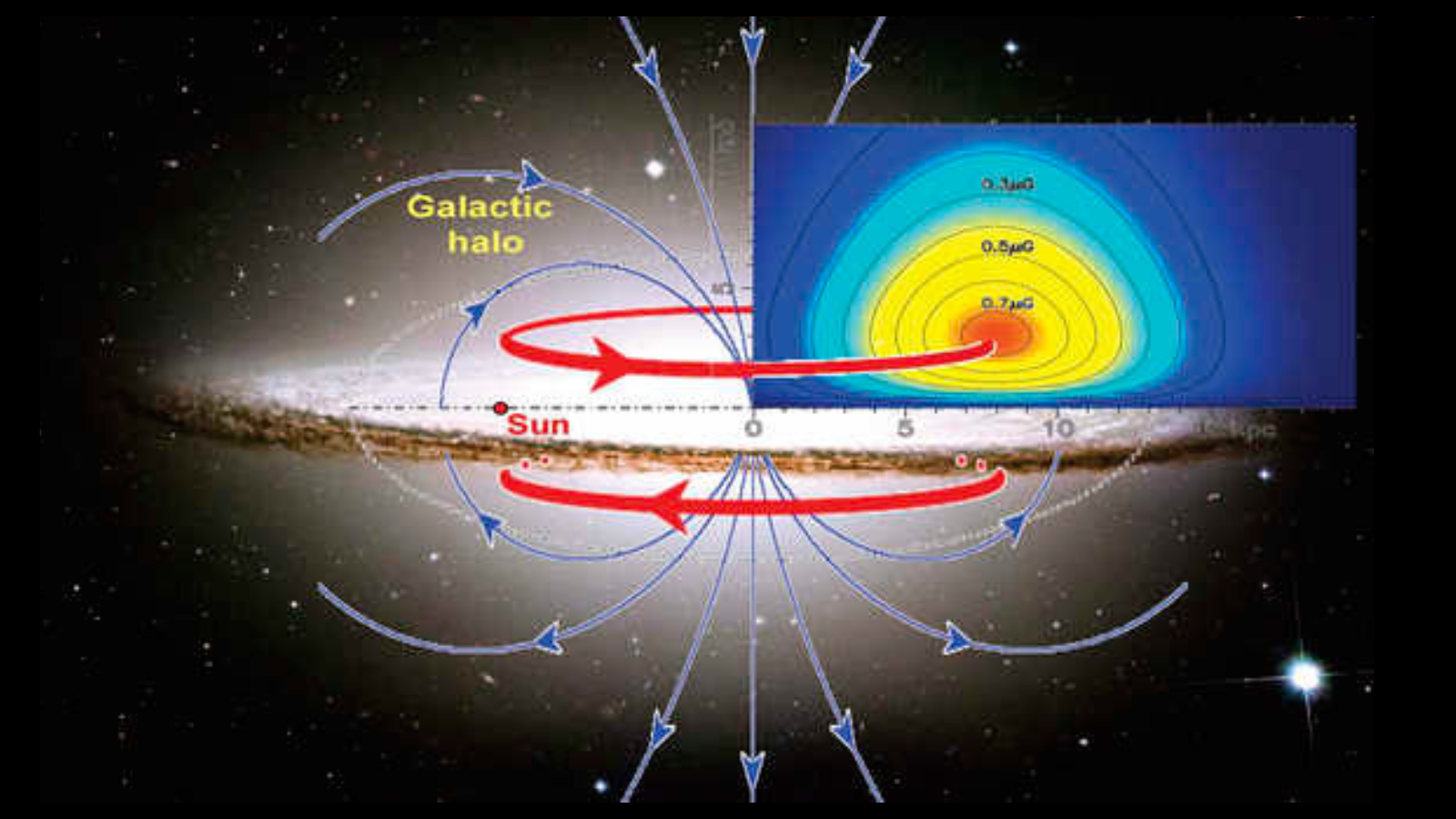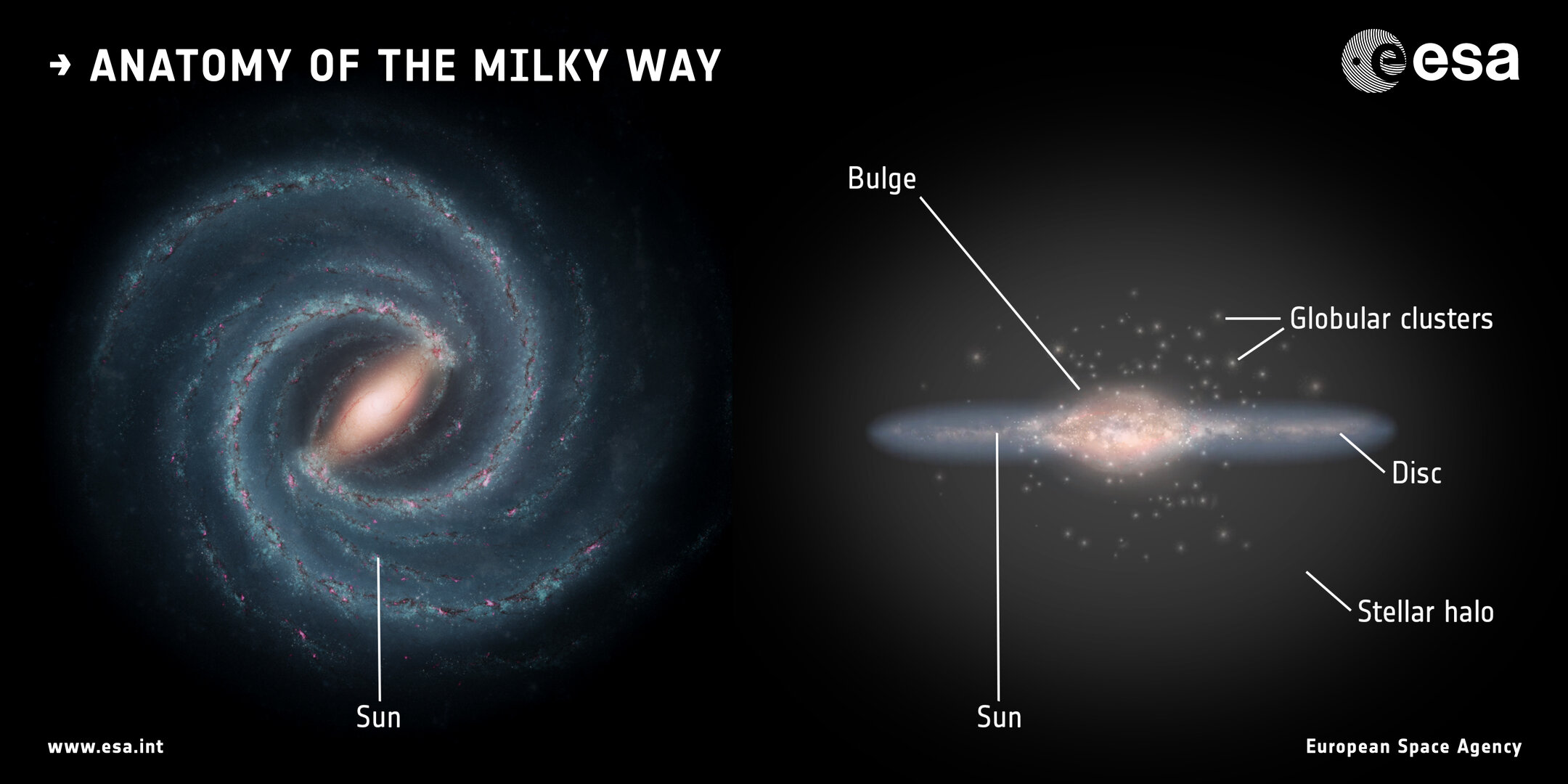Milky Way's halo is filled with 'magnetic donuts' as wide as 100,000 light-years
The discovery could help astronomers better understand how cosmic magnetic fields form and evolve.

The outer halo of the Milky Way is filled with magnetic fields that take the shape of vast donuts with diameters ranging from 12,000 to 100,000 light-years, with the heart of our galaxy at their center.
These donut or "toroid" shaped magnetic fields of the Milky Way are responsible for constraining the physical processes surrounding gas and dust that exist between stars, known as the interstellar medium, and also govern the propagation of charged particles called cosmic rays that travel through the universe at near-light speeds.
The discovery could help better understand the origin and evolution of magnetic fields in the cosmos, a mystery that has baffled astronomers for decades.
Related: Scientists reveal never-before-seen map of the Milky Way's central engine (image)
The new study was led by National Astronomical Observatories of the Chinese Academy of Sciences (NAOC) scientists Xu Jun and Han Jinlin.
As well as previously determining the structure of magnetic fields along the spiral arms of the Milky Way, in 1997, Jinlin discovered a striking anti-symmetry in the effects of celestial objects located beyond the Milky Way that are radio sources with respect to the coordinates of our galaxy. The researcher also found magnetic field directions were reversed below and above our galaxy's main galactic plane.
This anti-symmetry could arise from the toroidal structure of magnetic fields in the Milky Way's halo, the outer diffuse cloud of gas, dust, and stars that surrounds our galaxy.
Breaking space news, the latest updates on rocket launches, skywatching events and more!
However, these anti-symmetry effects of radio sources can also be generated by the interstellar gas and dust that surrounds the solar system. This is evidenced by the fact that distant pulsars and radio-emitting objects closer to the solar system also display the same anti-symmetry.
That means confirming the donut-like nature of magnetic fields in the Milky Way's outer halo and measuring the size of these fields would need to account for the antisymmetry-generating effects that arise as a result of magnetic fields outside the solar system but closer to the sun.
Jinlin and colleagues wanted to determine whether observed radio source asymmetries indicate that magnetic fields in the galactic halo still have a toroidal shape when the effects of the interstellar medium are subtracted.
To do this, the team aimed to investigate a phenomenon in the interstellar medium called Faraday rotation, which involves the orientation (or polarization) of radio waves changing as the result of magnetic flux, using measurements of pulsars by Five-hundred Aperture Spherical radio Telescope (FAST).
Once this effect had been measured and its effect on generating antisymmetric radio wave sources was quantified, it could be subtracted from the observations of distant cosmic radio sources.
This revealed that the antisymmetry caused by the magnetic fields in the Milky Way halo exist across the whole sky over Earth, extending out from the center of our galaxy to its outskirts.
This not only confirmed the toroidal shape of these fields but also tipped the researchers off to their vast size, revealing a radius range from 6,000 light-years to 50,000 light-years out from the center of the Milky Way.
The team's research was published on Friday (May 10) in The Astrophysical Journal.

Robert Lea is a science journalist in the U.K. whose articles have been published in Physics World, New Scientist, Astronomy Magazine, All About Space, Newsweek and ZME Science. He also writes about science communication for Elsevier and the European Journal of Physics. Rob holds a bachelor of science degree in physics and astronomy from the U.K.’s Open University. Follow him on Twitter @sciencef1rst.

